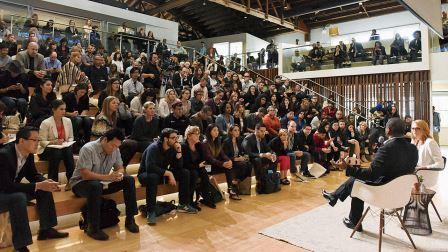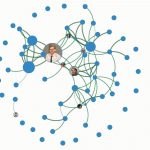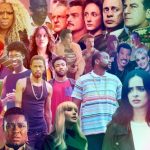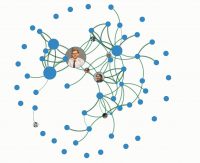15 Lessons Of Creativity For 2016
The Richard Rodgers Theatre, on West 46th Street in Manhattan, has 1,321 seats. But you can’t sit in any of them—not unless you wait a really long time, or pay an extortionate amount of money. That’s because the theater is home to Hamilton, the hottest Broadway musical in modern memory. Despite eight shows per week—which amounts to more than 10,000 seats—demand is wildly stripping supply, with performances selling out as fast as the tickets go on sale. Those who carped that Broadway was dying, that craven movie adaptations had robbed the stage of its character, are eating their words. By injecting artful new energy into the story of the founding fathers, Hamilton creator Lin-Manuel Miranda has rewritten the script, launching a global brand that is animating students, musicians, marketers, and politicos across the spectrum.
Creativity of this sort is neither easy nor common. It is special, which is why Miranda tops our list of the 100 Most Creative People in Business for 2016. Our 99 other honorees are no less inspiring.
Although we write about groundbreaking businesspeople in every issue, our annual Most Creative People list highlights 100 all-new subjects who have never before been profiled in the magazine. That forces us to be creative as journalists, to look in new areas, to find new initiatives, to challenge our own assumptions. Could the funeral industry be harboring any standouts? (Yep, see Nos. 45 and 46, as well as No. 72.) What about the refugee crisis? (See Nos. 56 and 57, and No. 79.) Or prison reform? (See Nos. 11 and 77.) Who are the emerging leaders in entertainment, social networking, and digital security? And who is hiding in plain sight at large institutions like Apple and Nike and Starbucks?
Our reporting led us to the crown princess in Norway and a TV host in the Middle East, a coffee-bean hacker and a DNA magician, a populist men’s wear designer and a hockey-league founder. We discovered innovators everywhere from fashion to education, material science to behavioral design. Our honorees hail from 13 countries and half are women. They are modern-business superheroes, and their examples can serve to inspire our own creativity. Here are 15 lessons drawn from among this year’s Most Creative People.
1. The impossible happens . . . only if you try
Lin-Manuel Miranda first tested his idea for a hip-hop musical about American history at the White House . . . in front of the Obamas. Jean Liu (No. 4), the president of Chinese ride-sharing pioneer Didi Chuxing, made her initial leadership move at the helm . . . by buying her biggest competitor. These high-stakes initiatives are typical of our honorees. It’s not that they don’t fear failure; rather, they believe that if one idea doesn’t pan out as planned, they’ll be able to devise another one.
2. Opportunity is always expanding
If you need reassurance that the status quo isn’t tenable, talk to Dawn Shaughnessy (No. 9), who led the team that discovered new elements that have been added to the periodic table. Or Karin Strauss (No. 16), whose group at Microsoft is unlocking how to store information on DNA, which could radically alter our assumptions about data. The physical world is not as fixed as we were taught in school, and our dreams needn’t be fixed either.
3. Dream what doesn’t exist
By coming up with a vision first, and then creating it, designers Maria Grazia Chiuri and Pierpaolo Piccioli (Nos. 5 and 6) at Valentino are commanding attention in the fashion world. Asako Shimazaki (No. 80) is bringing Muji’s vision of order to U.S. retail, while Jeff Turnas (No. 51) is reimagining what Whole Foods might be. Nike designer Martin Lotti (No. 28) has created socklike soccer cleats and has integrated secret messages into Olympic gear to inspire athletes.
4. What’s taboo is what matters
Rather than shy away from confronting cultural norms, Jill Soloway (No. 3) has been exploding them through breakthrough shows like Amazon’s Transparent—and by welcoming diverse talent both in front of the screen and behind it. Zainab Salbi’s (No. 44) TV show is breaking down barriers in the Middle East, raising cultural topics—how politics affects home life—that others shy away from.
5. Every community needs a muse
Anna Young (No. 22) has empowered nurses to solve health care dilemmas, and, in turn, they’re helping patients and doctors and saving money. Sarah Snow (No. 36) has tilted video-texting app Glide to ease mobile communication for the deaf. Kakul Srivastava (No. 25) is widening the GitHub audience and inviting more people into tech.
6. Work can be welcoming
Corporate bureaucracies need not rule the workplace, as REI’s Jerry Stritzke (No. 85), Slack’s Diógenes Brito (No. 86), and PwC’s Shannon Schuyler and Michael Fenlon (Nos. 87 and 88) have each distinctively illustrated. At Northrop Grumman, the FabLab launched by Tony Long (No. 59) has unleashed a new kind of play—and productivity—that is now being expanded to company offices around the U.S.
7. Take it all in
YouTube star Lilly Singh (No. 100) keeps her videos fresh by taking time to explore how others are creating. Nicole Van Der Tuin (No. 84) at First Access was aware enough to notice that mobile-phone registrations could provide credit histories for those without other options.
8. Competition is fuel
Katrine Bosley (No. 34) at Editas Medicine isn’t dissuaded by the many obstacles facing genetic editing. Instead, they increased her urgency for action. Katie Nolan (No. 12) may be a rare woman fronting a sports TV show, but that’s prompted her to take risks—and try formats—that have helped her build a devoted audience.
9. More than the lining is silver
Who pays attention to fungus? At Starbucks, Carlos Mario Rodriguez (No. 15) had to—it was threatening the world’s coffee crop—and not only did he find a solution, the way he deployed it empowered under-protected coffee growers. John McDonough’s (No. 8) team at T2 Biosystems took aim at a different kind of fungus, the sepsis-causing candida, and their remedy—using magnetics—promises to apply to a far wider group of ailments.
10. Teaching is a privilege
Off-White designer Virgil Abloh (No. 75) may be the talk of Milan and a close ally of Kanye West, but he makes an extra effort to share his learnings with kids. Markus Kressler (No. 79) is bringing education to refugees, while Brian Bannon (No. 54) is turning Chicago’s libraries into high-tech hubs for those without access to digital tools.
11. Impossible problems are addressable
The Crown Princess Mette-Marit of Norway and Kate Roberts (Nos. 92 and 93) have pressed members of their Maverick Collective to help poor girls around the world. Yasmin Belo-Osagie (No. 26) of She Leads Africa is helping women-led businesses blossom in Africa.
12. Protecting the planet is good business
Green Mountain Power CEO Mary Powell (No. 32) is trying to get customers of her own energy firm to need less energy, while H&M’s Sara Wallander (No. 35) found a way to embrace nontoxic materials and sustainable packaging in the brand’s new makeup line—without jacking up prices.
13. Even weeds need pruning
With marijuana becoming a growing legal business, Colorado’s director of marijuana coordination, Andrew Freedman (No. 99), is putting regulations in place to balance societal concerns and financial viability. When Snoop Dogg introduced his branded marijuana line, Pentagram’s Emily Oberman (No. 63) constructed a visual design motif that could appeal to a more sophisticated marketplace.
14. Data can have a heart
Apple’s ResearchKit and CareKit, led by Divya Nag (No. 2), open the way for new medical solutions with broader information. Ida Tin (No. 70) at Clue is among those tapping into the opportunity, allowing women new freedom and understanding of their menstrual cycles.
15. Generosity comes back
Chance the Rapper (No. 40) gives away his music to fans, which allows him to stay independent—and endears him to his audience. Miranda has made Hamilton tickets, which can go for upwards of $3,000 each on the resale market, available for some high schoolers for only $10. It’s almost enough to make you want to be a teenager again.
A version of this article appeared in the June 2016 issue of Fast Company magazine.
Fast Company , Read Full Story
(3)













